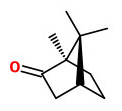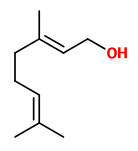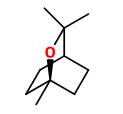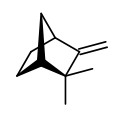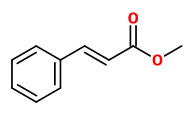Dies ist eine alte Version des Dokuments!
Boesenbergia rotunda (L.) Mansf. - syn. Kaempferia pandurata Roxb.; Boesenbergia pandurata (Roxb.) Schltr.; Curcuma rotunda L.; Kaempferia rotunda Don. - Zingiberaceae
凹唇姜 ao chun jiang (chin.), Chinese keys, finger root, Fingerwurz, Chinesischer Ingwer
Plants up to 50cm high, native in Asia from India to Indonesia, cultivated throughout Indo-China; rhizomes bright yellow, ovoid-globose, strongly aromatic; leaves 3-4, leaf sheath red; leaf blade green on both surfaces, ovate-oblong or elliptic-lanceolate, 25-50cm long, glabrous except for sparsely hairy midvein abaxially; inflorescences terminal on pseudostems, appearing from within apical leaf sheaths, bracts lanceolate, 4-5cm; flowers aromatic, calyx 1.5-2cm, corolla pink, corolla tube 4.5-5.5cm; lateral staminodes light pink, labellum white or pink with purple stripe, fiddle-shaped.
http://www.efloras.org/florataxon.aspx?flora_id=2&taxon_id=200028353
„Fingerroot has a strong, dominating flavour that I would, lacking a better term, classify as „medical“… Fingerroot is used as a medicine, not for cooking, in China, and it is a rare spice in the cuisines of Vietnam and Indonesia: I have seen it appearing in markets in, e. g., Saigon [Sài Gòn] or Bukittinggi, but corresponding cookbooks usually do not mention it.
It is only Thai cooking, however, where fingerroot plays the role of an important flavouring. Although it is employed in lesser extent than the related spices ginger and galanga, it often goes into curries, particularly fish curries (see coconut about Thai curry pastes) and it is a common ingredient for vegetable stews or fish soups (together with kaffir lime leaves).“
http://gernot-katzers-spice-pages.com/engl/Boes_pan.html
„Fingerroot is used as a flavouring and eaten as a vegetable. It is cultivated for its rhizomes and roots in Indonesia, Malaysia, Indochina and India where they are used as a spicy flavouring in food and pickles. …
In traditional medicine, rhizomes and roots are used in post-partum tonic mixtures (such as the popular Indonesian tonic, ‘jamu’), as a stomachic (to improve appetite and digestion) and carminative (to aid digestion and reduce gas) and as a remedy for coughs and mouth ulcers. Crushed rhizomes and roots are also applied externally to treat rheumatism.
Fingerroot is propagated from rhizome cuttings.“
http://www.kew.org/science-conservation/plants-fungi/boesenbergia-rotunda-fingerroot
Major constituents of the essential oils of the rhizomes were camphor (16.1-32.1%), geraniol (16.2-26.0%), (E)-β-ocimene (19.0-23.7%), 1,8-cineole (7.5-13.9%), camphene (5.4-6.0%) and methyl cinnamate (2.2-5.8%).
„The oils were found to possess some compositional differences and considerable variation in the levels of some individual constituents, suggesting the existence of chemical varieties, which could be distinguished according to their ocimene contents. (E)-β-Ocimene and (Z)-β-ocimene, which were present in appreciable amounts in three samples, were conspicuously absent in one sample.“
[Constituents of the rhizome oils of Boesenbergia pandurata (Roxb.) Schlecht from Malaysia, Indonesia and Thailand., Jantan, I.B., Basni, I., Ahmad, A.S., Ali, M., Azah, N., Ahmad, A.R., Ibrahim, H., Flavour and fragrance journal, 16(2), 2001, 110-112]
„…used as traditional medicine to treat several illnesses, consumed as traditional tonic especially after childbirth, beauty aid for teenage girls, and as a leukorrhea preventive remedy for women. Its fresh rhizomes are also used to treat inflammatory diseases, in addition to being used as an antifungal, antiparasitic, and aphrodisiac among Thai folks. Its leaves are used by locals to alleviate food allergic and poisoning. Moreover, AIDS patients self-medicate themselves with B. rotunda to cure the infection. With the advancement in technology, the ethnomedicinal usages of herbal plants can be explained through in vitro and in vivo studies to prove the activities of the plant extracts. The current state of research on B. rotunda clearly shows that the isolated bioactive compounds have high potential in treating many diseases.“
[Eng-Chong, T., Yean-Kee, L., Chin-Fei, C., Choon-Han, H., Sher-Ming, W., Li-Ping, C. T., … & Othman, S. (2012). Boesenbergia rotunda: from ethnomedicine to drug discovery. Evidence-Based Complementary and Alternative Medicine, 2012] https://www.hindawi.com/journals/ecam/2012/473637/
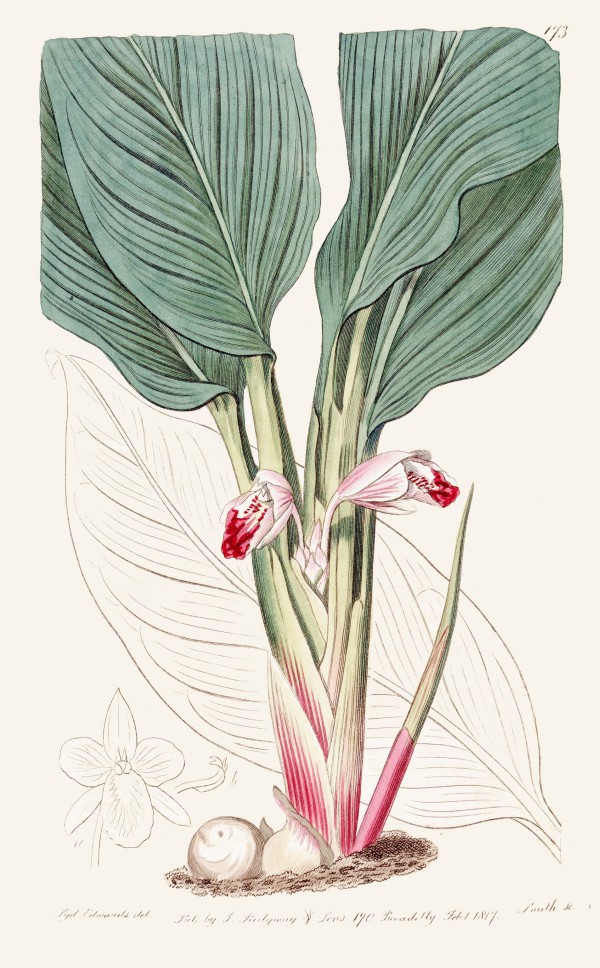
Boesenbergia rotunda (L.) Mansf. as Kaempferia pandurata Roxb.,
Botanical Register, vol.2 t.173 (1816) [S.Edwards]
http://plantgenera.org/species.php?id_species=149127

